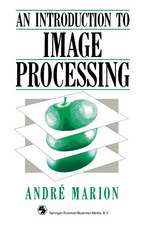Designing Interactive Speech Systems: From First Ideas to User Testing
Autor Niels O. Bernsen, Hans Dybkjaer, Laila Dybkjaeren Limba Engleză Paperback – 9 apr 1998
Preț: 333.54 lei
Preț vechi: 416.93 lei
-20% Nou
Puncte Express: 500
Preț estimativ în valută:
63.84€ • 69.37$ • 53.66£
63.84€ • 69.37$ • 53.66£
Carte tipărită la comandă
Livrare economică 21 aprilie-05 mai
Preluare comenzi: 021 569.72.76
Specificații
ISBN-13: 9783540760481
ISBN-10: 3540760482
Pagini: 288
Ilustrații: IX, 276 p. 86 illus.
Dimensiuni: 155 x 235 x 15 mm
Greutate: 0.45 kg
Ediția:1st Edition.
Editura: SPRINGER LONDON
Colecția Springer
Locul publicării:London, United Kingdom
ISBN-10: 3540760482
Pagini: 288
Ilustrații: IX, 276 p. 86 illus.
Dimensiuni: 155 x 235 x 15 mm
Greutate: 0.45 kg
Ediția:1st Edition.
Editura: SPRINGER LONDON
Colecția Springer
Locul publicării:London, United Kingdom
Public țintă
ResearchCuprins
1. Interactive Speech Systems.- 1.1 Introduction.- 1.2 Background and Scope of This Book.- 1.3 State of the Art.- 1.4 Unsolved Problems.- 2. Speech Interaction Theory.- 2.1 Introduction.- 2.2 Elements of Interactive Speech Theory.- 2.3 Context.- 2.4 Interaction Control.- 2.5 Language.- 2.6 Speech.- 2.7 Performance.- 2.8 Characterizing Systems.- 3. Developing Interactive Speech Systems.- 3.1 Introduction.- 3.2 The Development and Evaluation Process.- 3.3 Supporting Completeness and Consistency of Requirement Specifications.- 3.4 Representing Design Space and Design Reasoning.- 3.5 Speech Functionality.- 4. Interaction Model Analysis and Design.- 4.1 Introduction.- 4.2 Guidelines for Co-operative Interaction Design.- 4.3 Guidelines Illustrated and Explained.- 4.4 Development and Justification of the Guidelines.- 5. Wizard of Oz Simulation.- 5.1 Introduction.- 5.2 Wizard of Oz for Interaction Model Development.- 5.3 Planning Wizard of Oz Simulations.- 5.4 Developing the First Interaction Model.- 5.5 Iterating the Interaction Model.- 5.6 Uses of WOZ.- 6. Implementational Issues.- 6.1 The Overall Dialogue System.- 6.2 Dialogue Control.- 6.3 Debugging.- 7. Corpus Handling.- 7.1 Introduction.- 7.2 Transcription.- 7.3 Mark-up.- 7.4 Coding.- 7.5 Corpus Tools.- 8. Evaluation.- 8.1 Introduction.- 8.2 Performance Evaluation.- 8.3 Diagnostic Evaluation.- 8.4 A By-product: User Errors.- 8.5 Adequacy Evaluation.- 9. Next Steps in Interactive Speech Systems.- 9.1 Introduction.- 9.2 Advanced Mixed Initiative Interactive Speech Systems.- 9.3 Intelligent Multimodal Systems Using Advanced Interactive Speech.- References.
Caracteristici
The first book to review the complete process of designing a state of the art dialogue system * Adopts an applications-oriented approach using examples taken from industry and shows how the development of advanced applications drives research * Presents a number of new practical tools for dialogue design











